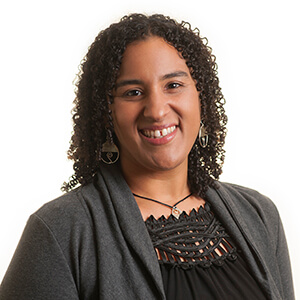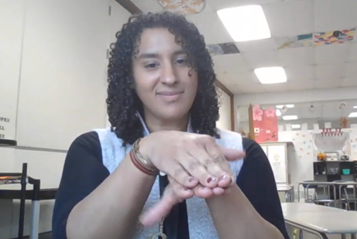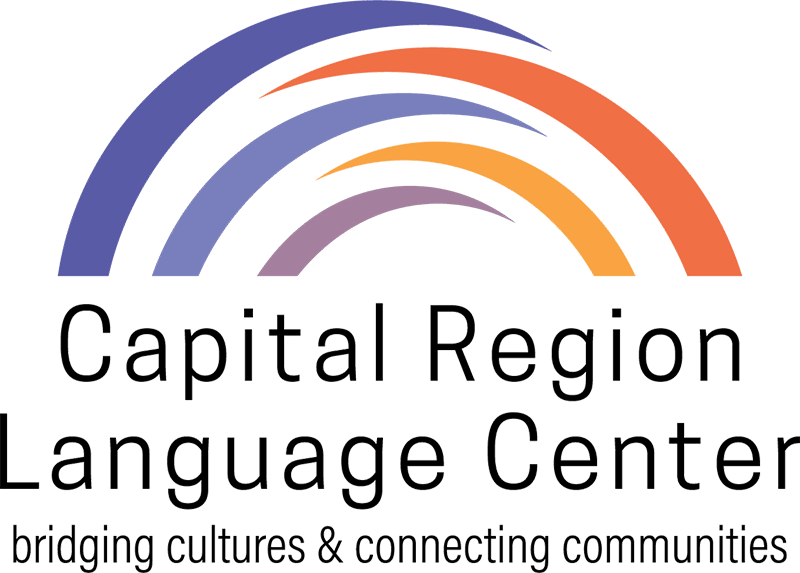Our teacher feature is Kayani Ilse, an American Sign Language instructor at Capital Region Language Center. Kayani’s connection to American Sign Language started at home when her family adopted a deaf brother. She brings almost two decades of experience as an educational ASL interpreter.
Kayani holds both a bachelor’s degree in American Sign Language Interpreting and a Master’s in Teacher Preparation with a concentration in Deaf Education. She is credentialed as both a K-12 teacher of the Deaf and 7-12 ASL language teacher. She began teaching at Capital Region Language Center in 2011.
Explain your family connection to ASL.
My family adopted my deaf brother when I was around 10 years old. We began signing as a family, but eventually I became the family member who interpreted at our family gatherings, meals, and outings.
I really began to love Deaf culture and community interning for a Deaf Education classroom as part of a high school senior project. There I met my mentor, a brilliant teacher and interpreter. I loved teaching and loved putting both of my passions together: ASL+Education.
I pursued ASL and Deaf Education as a career. I had an amazing experience in Oregon for six years, obtaining both my BA and MS and immersing myself in the Deaf community, college coursework with Deaf professors, and finally branching out to explore the career paths of ASL interpreting and becoming a teacher of the Deaf and Hard of Hearing.

Kayani Ilse has been teaching American Sign Language for nearly two decades. She began learning ASL when her family adopted her deaf brother and began teaching at CRLC in 2011.
Do you still sign at home with your family?
My family has since grown and moved apart. I have taught my children from infancy to sign to help build their communication skills and now they participate in ASL classes with a Deaf community member. They are becoming fluent in ASL and once again for me, conversations at home are a mix of ASL and spoken English!
What is your favorite word or phrase to sign?
I have a few favorite words: Sea Turtle (Kiss Fist, which means “love it!). Also, the phrase I live by: “There is always something to be grateful for.”

CLICK TO WATCH THE VIDEO OF KAYANI SIGNING: “Hello, my name is Kayani Ilse, I teach ASL at Capital Region Language Center. My favorite signs are: sea turtle, Kiss Fist Love, and my favorite phrase I live by is there is always something to grateful thankful for. Finish”
What is the most common misconception about ASL?
Many people believe ASL is an extension of English. They are vastly different as ASL has more visual cues and is more direct while still being colorful and soulful in its translation. There are many instances where I cannot find the right English word to fit the scenario or feeling — but I can give you the sign with facial expression that fits perfectly!
The movie “CODA” brought greater awareness to American Sign Language. It is also being used to assist non-verbal individuals. Where do you see ASL in the years to come?
ASL is an amazing language to learn even for basic interactions. It bridges the language barrier gap if someone is unable to communicate in spoken English. I have seen this at times with my students who show me time and again how they incorporate their love of ASL with a passion, whether that’s music, poetry, storytelling, or being able to communicate with friends outside the classroom.
I believe ASL is rich in culture, community, and language and we are just starting to see this beauty come to life with representation in media, fought for in our government, and more awareness of Deaf community needs for access.
What else should we know about you?
This year (2025) is my 19th year of teaching and I find that I love this language (ASL) more and more each day. This passion is not a flighty one, but a “hearttouch” (that is an ASL sign) that I will forever want to share, take part in, and most importantly to continue to learn from.


